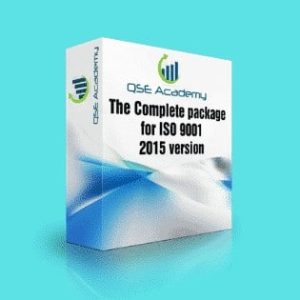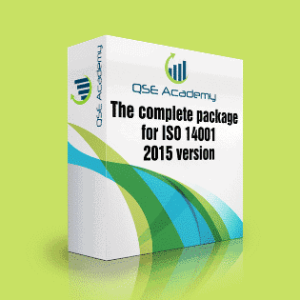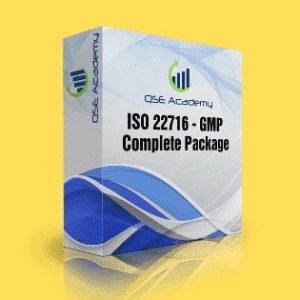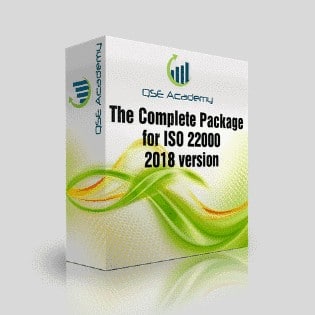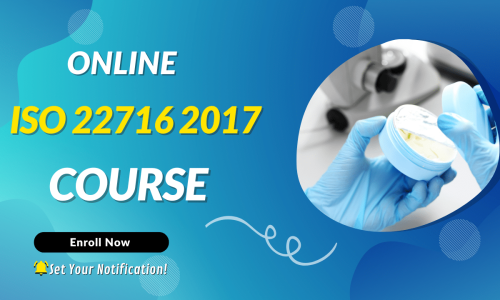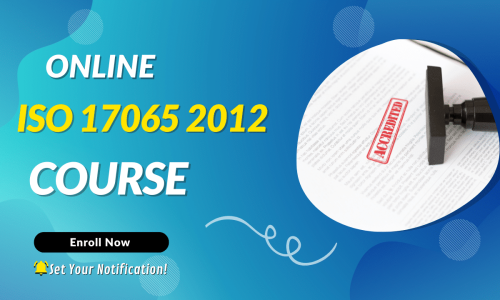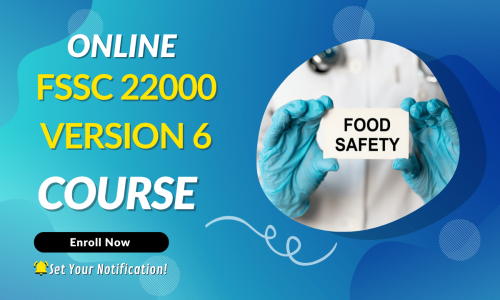Essential Documents Required by FSSC 22000 V6
Last Updated on October 13, 2025 by Hafsa J.
Essential Documents Required by FSSC 22000 V6
Let’s be real—when it comes to FSSC 22000 Version 6, a lot of businesses get overwhelmed by the documentation. I’ve worked with food manufacturers, packagers, and suppliers across the globe, and I’ve seen it all: from binders bursting with outdated SOPs to teams scrambling the night before an audit trying to “fill the gaps.” Not fun.
In my experience helping companies prepare for FSSC audits, most of the stress comes from one thing—not knowing exactly which documents are essential and which ones are just clutter. That’s why I created this guide: to cut through the confusion and give you a clear, no-fluff breakdown of the must-have documents that auditors actually want to see.
So if you’re gearing up for certification—or just trying to stay compliant—this post will walk you through exactly what FSSC 22000 V6 expects, why each document matters, and how to keep things organized without drowning in paperwork. Let’s make compliance simpler, smarter, and way less stressful. Ready? Let’s dive in.
First Things First—Understand How FSSC 22000 V6 Is Structured
Before you start building documents or dusting off old templates, you need to understand how FSSC 22000 Version 6 is actually put together. I can’t tell you how many companies jump straight into writing SOPs without realizing they’re missing an entire category of required documents.
Here’s the deal:
FSSC 22000 V6 isn’t just one standard. It’s a combination of three core components:
-
ISO 22000:2018 – This covers the foundation of your Food Safety Management System (FSMS). Think policies, objectives, hazard analysis, and system control procedures.
-
PRP Standards (like ISO/TS 22002-1) – These are sector-specific requirements for things like cleaning, pest control, facility layout, etc.
-
FSSC 22000 Additional Requirements – This part adds a few more expectations on top of ISO 22000 and PRPs—things like food fraud prevention, allergen management, and equipment controls.
When you understand this structure, everything else starts making sense. Your documentation needs to reflect each of these layers—not just the ISO part. That’s a big reason many first-time applicants fall short during the audit. They document what they know and forget what’s actually required.
Up next, let’s break down the core documents you absolutely need from the ISO 22000 side—because that’s where most people start (and sometimes stop).
Start with the Core: ISO 22000:2018 Mandatory Documents
This is where most documentation efforts begin—and honestly, it’s where a lot of folks get stuck. They either overcomplicate things with piles of unnecessary files or miss the critical ones altogether. In my experience, getting the ISO 22000 part right gives your food safety system a solid backbone.
So what documents are absolutely required?
Here’s a practical list of the key documents you’ll need under ISO 22000:2018:
-
Food Safety Policy – This is your official commitment to food safety. It should be clear, easy to understand, and signed off by top management.
-
Scope of the FSMS – Define what parts of your operation are covered by the Food Safety Management System. Don’t leave this vague—auditors will ask.
-
Documented Procedures for Control of Documents and Records – You need a system to manage, review, update, and store your documents and records.
-
Hazard Analysis and CCP/OPRP Determination – This is your HACCP core. Make sure your hazard analysis is thorough and well-documented.
-
Monitoring and Measurement Procedures – Whether it’s temperature logs or metal detection checks, these show you’re keeping things under control.
-
Internal Audit and Management Review Records – Show that you’re checking your system regularly and acting on findings.
-
Corrective Actions and Nonconformance Handling – You need a clear process for dealing with problems and keeping them from happening again.
What I’ve seen work:
One client—a medium-sized dairy facility—created a “compliance map” linking each ISO 22000 clause to its supporting documents. It made audits smoother and training easier because everyone could see exactly how each part of the standard was being handled. That kind of clarity? Auditors love it.
And remember: ISO 22000 is process-based. Your documentation needs to reflect how you actually operate, not just what the standard says on paper. I’ve seen plenty of beautifully written manuals fail because they didn’t match real-world practice.
Next, we’ll look at how the PRP standards shape your documentation—because operational hygiene is just as crucial as your policies.
Don’t Overlook the PRPs—They’re Just as Critical
Now that you’ve got the ISO 22000 foundation in place, let’s talk about something I see a lot of companies underestimate: the Prerequisite Programs, or PRPs.
These are the nuts and bolts of day-to-day food safety. We’re talking about cleaning schedules, pest control, equipment layout—basically, the operational hygiene that supports your HACCP plan. And under FSSC 22000, the PRPs aren’t optional. They’re required. Sector-specific. And absolutely audit-critical.
What does that mean in practice?
Depending on your food sector, your PRP documentation will align with specific technical standards. For example:
-
Food Manufacturing? You’ll need to follow ISO/TS 22002-1, which covers:
-
Cleaning and sanitation procedures
-
Personal hygiene policies
-
Pest control programs
-
Maintenance procedures
-
Allergen management
-
-
Food Packaging? You’ll be using ISO/TS 22002-4.
-
Catering or Retail? There are other sector-specific PRP standards.
Real example from the field:
I worked with a nut processing company that had great HACCP documentation—but their allergen control SOP was buried in a staff training folder. The PRP requirement was technically met, but the way it was stored made it hard for auditors to verify. We moved it into a centralized “PRP Library” tied to ISO/TS 22002-1 clauses. Problem solved.
Here’s what I recommend:
-
Map your PRP procedures directly to the applicable ISO/TS 22002 standard.
-
Make sure every SOP, checklist, and logbook is up to date and actively used—not just created for show.
-
Keep site-specific context. Generic templates won’t cut it here.
Next up, we’ll get into the FSSC 22000 Version 6 additional requirements—because yes, there’s even more documentation you need beyond ISO and PRPs.
FSSC 22000 V6 Has Extras—Here’s What You Absolutely Can’t Miss
If you’ve already gone through ISO 22000 and the relevant PRPs, you might think you’re done. But here’s the catch: FSSC 22000 Version 6 adds a layer of its own specific requirements—and if you skip these, you’re setting yourself up for a nonconformity.
In my experience, this is where even experienced food safety teams slip up. These aren’t always big, complicated documents—but they are essential.
Here’s what Version 6 wants to see (and yes, these are mandatory):
-
Food Defense Plan
You need a documented plan that shows how you protect your facility from intentional harm—think sabotage, vandalism, or other threats. -
Food Fraud Mitigation Plan
This isn’t about safety—it’s about integrity. You have to show how you reduce the risk of fraudulent ingredients or materials entering your supply chain. -
Allergen Management Procedures
Document how allergens are controlled in production, storage, cleaning, labeling—everything. If you’re working in a mixed-allergen environment, this is crucial. -
Product Labelling Controls
Auditors want to see procedures for making sure all your labels (especially allergens, nutritional info, and product claims) are accurate and up to date. -
Environmental Monitoring Program
Especially if you produce ready-to-eat food, you’ll need a documented program for testing your environment—surfaces, equipment, etc.—for microbial contamination. -
Equipment Management and Preventive Maintenance
You’ll need procedures that show how you maintain food-contact equipment to prevent safety issues—this includes cleaning, calibration, and repair logs. -
Training Records for All Food Safety-Related Roles
You can’t just say “we train our staff.” You have to prove it with records that show who was trained, when, and on what topics.
Quick insight from the field:
One client—a packaging manufacturer—was completely audit-ready with their ISO and PRP documents but didn’t have a food fraud vulnerability assessment. They assumed it didn’t apply to them because they weren’t handling ingredients. Turns out, even packaging can be subject to fraud (think counterfeit materials or mislabeling). We built a simple, risk-based plan with supplier verification steps—and they passed with zero nonconformities.
My recommendation?
Create a separate section in your document control system labeled “FSSC Additional Requirements” and make sure each one is traceable to Version 6 clauses. It saves time, shows clear alignment with the standard, and helps everyone on your team stay on the same page.
It’s Not Enough to Say It—You Need Records to Prove It
Here’s something I tell clients all the time: auditors don’t just want to see your plans—they want to see that you’re actually doing what you say. That’s where records come in. If there’s no record, in the auditor’s eyes, it didn’t happen.
And let’s be honest: keeping records can feel like a chore. But when done right, it becomes your best defense against nonconformities and a powerful tool for continuous improvement.
So, what kinds of records should you have ready?
Let’s break it down by key areas:
-
Monitoring Records
This includes daily logs for critical control points (CCPs), operational prerequisite programs (OPRPs), and other process controls. Whether it’s temperature checks, metal detector validations, or cleaning verification—track it consistently. -
Verification and Validation Results
These could include microbiological testing results, environmental monitoring reports, or supplier audit summaries. You’re showing that your system works, not just that it’s documented. -
Internal Audit Reports
Your audit schedule, completed audit checklists, findings, and follow-up actions should all be clearly recorded. Bonus points if you can show improvement over time. -
Management Review Minutes
These records demonstrate leadership involvement. Make sure to document what was discussed—performance trends, nonconformities, resource needs—and what decisions were made. -
Corrective and Preventive Action Logs (CAPA)
If something went wrong, show how you responded. Outline the issue, root cause analysis, corrective action, and how you verified it was effective. -
Training Records
Every food safety-related role should have a documented training history. Don’t forget temporary staff or contractors—they count too.
A quick story:
One of my clients—a spice blending facility—had pristine procedures but got hit with a major nonconformity during their Stage 1 audit. Why? They didn’t have a training record for their allergen changeover process. The process was being followed, but they couldn’t prove staff had been formally trained on it. We fixed that by rolling out a simple training matrix with sign-offs—and they sailed through Stage 2.
My go-to tip?
Build a Records Index that lists each required record, its location (physical or digital), responsible person, and retention period. It sounds simple, but it makes audit prep so much easier and shows auditors that your system is not just functional—it’s controlled.
Up next, we’ll talk about how to keep all these documents and records organized without losing your mind.
Keeping It All Together—How to Organize Your FSSC 22000 Documents Without Going Crazy
If you’ve ever spent half a day digging through random folders trying to find that one cleaning record from two months ago, you’re not alone. I’ve been called in to fix more than one audit disaster caused by poor document control—not because the documents were wrong, but because no one could find them when it mattered.
Good documentation is about more than having the right files. It’s about making sure they’re easy to access, up to date, and clearly managed.
Here’s what works—based on real experience:
-
Use a Clear Folder Structure
Whether you’re using Google Drive, SharePoint, or a local server, group documents by category:-
Policies & Objectives
-
ISO 22000 Procedures
-
PRP Documents
-
FSSC Additional Requirements
-
Records & Logs
-
Training & HR
Don’t overcomplicate it—but don’t dump everything into one “Food Safety Docs” folder either.
-
-
Version Control is Non-Negotiable
Every controlled document should have a version number, issue date, revision history, and approval signature (physical or digital). I’ve seen teams accidentally use outdated SOPs just because they weren’t clearly marked. It’s an easy fix—and a huge credibility booster. -
Assign Document Owners
One person doesn’t need to manage everything, but every document should have someone responsible for it. That way, updates don’t fall through the cracks. -
Set a Review Schedule
Review major documents annually, or more often if there are changes in products, processes, or regulations. Trust me—stumbling into an audit with a three-year-old HACCP plan doesn’t go over well.
True story:
I worked with a small but growing ready-meal company that had great procedures… scattered across six laptops and a handful of email threads. We created a centralized, cloud-based system with structured folders and a simple dashboard for tracking updates. Their next audit? Zero document-related nonconformities—and the auditor specifically praised how easy everything was to review.
My personal rule of thumb?
If you can’t locate a document or record in under three minutes, your system needs work. Auditors won’t wait around forever, and your team shouldn’t have to either.
Coming up next, I’ll share a few expert tips and insider tricks that can make your documentation process smoother, faster, and audit-proof.
Pro Tips and Insider Insights That Make a Real Difference
Here’s what I’ve noticed after working with dozens of food businesses prepping for FSSC 22000: the difference between passing and crushing an audit usually comes down to small, smart decisions behind the scenes.
Below are the go-to tips I always share with clients—because they work.
Pro Tip: Create a Master Document Index
Set up a simple spreadsheet that lists every document, its clause reference, owner, version number, and review date.
Why this works:
When an auditor asks, “How do you manage equipment maintenance documentation?”—you’ll know exactly where it lives, who owns it, and how current it is. It shows control, and auditors love that.
Insight: Tie Every Record to Its Related Procedure
In your logs and forms, include a field or footer that references the related SOP or policy.
Real example:
One of my clients added a simple “Linked Procedure” field to every form header. During the audit, it was crystal clear how each record fit into the larger system. The auditor actually called it one of the best-integrated systems they’d seen that year.
Pro Tip: Schedule Document Reviews in Your Calendar
Don’t leave reviews to chance or last-minute prep. Block quarterly review sessions for key sections of your FSMS. It helps you stay ahead of changes—and builds a habit of continuous improvement.
Insight: Use Color Codes for Document Status
If you’re using a digital system, color-code documents by status—green for current, yellow for due soon, red for outdated.
Why it helps:
This visual cue can quickly tell you where to focus before an audit or internal review, especially if you have dozens of documents to track.
Pro Tip: Write Procedures Like You Talk
You don’t need legal-sounding language. Use plain, clear instructions that match how your team actually works.
In practice:
One training session I led involved rewriting cleaning SOPs using short, step-by-step language. Staff compliance shot up because they finally understood exactly what to do—and why it mattered.
Common Mistakes to Avoid (and What to Do Instead)
Over the years, I’ve seen businesses—big and small—run into the same avoidable issues when it comes to FSSC 22000 documentation. Here’s what to watch out for, and how to sidestep them before they become audit problems.
Mistake 1: Using Outdated Templates
I can’t tell you how often I’ve opened a client’s SOP only to see it still references ISO 22000:2005. That’s a red flag to auditors and a signal that your system may not reflect current best practices.
What to do instead: Always verify your templates reflect ISO 22000:2018 and FSSC 22000 Version 6 updates. Update and reapprove all key documents annually or when a relevant change occurs.
Mistake 2: Generic Procedures with No Site-Specific Context
A beautifully written cleaning procedure downloaded from the internet doesn’t help if it doesn’t match your facility layout, your staff, or your equipment.
What to do instead: Customize every critical procedure. Use actual equipment names, real schedules, and local terms your team understands. Make it yours.
Mistake 3: Treating Records as a Low Priority
Some teams spend so much time perfecting policies that they forget to capture daily logs, monitoring sheets, or training attendance. When auditors don’t see the records, they assume your system isn’t implemented.
What to do instead: Build habits around record-keeping. Assign responsibilities clearly and do weekly spot checks to keep things tight.
Mistake 4: Last-Minute Audit Prep
If your team is scrambling to gather documentation a week before the audit, you’re doing it wrong. Auditors can tell when a system has been “dressed up” for their visit.
What to do instead: Treat food safety documentation as a living system. Maintain it like you would a production schedule—routinely, not reactively.
Frequently Asked Questions
Q: Do I need to keep printed copies of all documents and records?
A: Not necessarily. FSSC 22000 allows for digital documentation—as long as it’s controlled, backed up, and easily retrievable. What matters is access, not format.
Q: How detailed should my procedures be?
A: As detailed as your team needs to do the job consistently and safely. Think of them as training tools. If someone new joined tomorrow, could they follow the steps with no confusion? If yes, you’re on the right track.
Q: What happens if a document is missing during an audit?
A: It depends. If it’s a minor record, you may get a minor nonconformity. If it’s a core requirement (like your HACCP plan), it could jeopardize your certification. Always run internal audits to catch these gaps early.
Clarity, Confidence, and Your Next Move
If you’ve made it this far, you now have a clear roadmap of the essential documents required by FSSC 22000 Version 6. More importantly, you understand why each document matters—not just for passing an audit, but for building a food safety system that actually works.
Let’s quickly recap what we covered:
-
You need documents that align with ISO 22000:2018, sector-specific PRPs, and FSSC 22000’s additional requirements.
-
It’s not just about having policies on paper—you also need real records that prove your system is active, monitored, and continuously improved.
-
Keeping your documentation organized, updated, and easy to access is just as important as the content itself.
-
And finally, a few smart tips—like using a document index and writing procedures in plain language—can make the whole process smoother and more audit-friendly.
I’ve helped businesses at every stage of the certification journey—from first-timers to seasoned exporters—and I can tell you this: a well-documented, well-managed FSMS is a competitive advantage. It’s not just about compliance—it’s about confidence, consistency, and credibility.
If you’re getting ready for certification (or just want to tighten up your system), here’s your next step:
Download our free FSSC 22000 V6 Document Checklist—it includes everything we talked about in this guide, with space to track your own documentation status.
Or, if you want expert eyes on your system, reach out to QSE Academy for tailored support, templates, or one-on-one consulting. We’ve helped hundreds of food businesses worldwide—and we’d be happy to help yours too.
Let’s make your next audit the smoothest one yet.
Whether it’s ISO 9001, ISO 22000, or the cosmetics-focused ISO 22716, I’ve spent my career I’m not here to call myself an expert—I prefer “enthusiast” because I truly love what I do. When I’m not writing about standards, you’ll probably find me playing Piano 🎹, connecting with people, or diving into my next big project💫. I’m an engineer specialized in the food and agricultural industry
make ISO standards less intimidating and more approachable for everyone.
turning complex jargon into clear, actionable steps that businesses can actually use.
There’s something incredibly rewarding about helping people navigate food safety and quality management systems
in a way that feels simple, practical, and even enjoyable.
I have a Master’s in QHSE management and over 12 years of experience as a Quality Manager
I’ve helped more than 15 companies implement ISO 9001, ISO 22000, ISO 22716, GMP, and other standards
My clients include food producers, cosmetics manufacturers, laboratories, and service companies
I believe quality systems should be simple, useful, and efficient.







